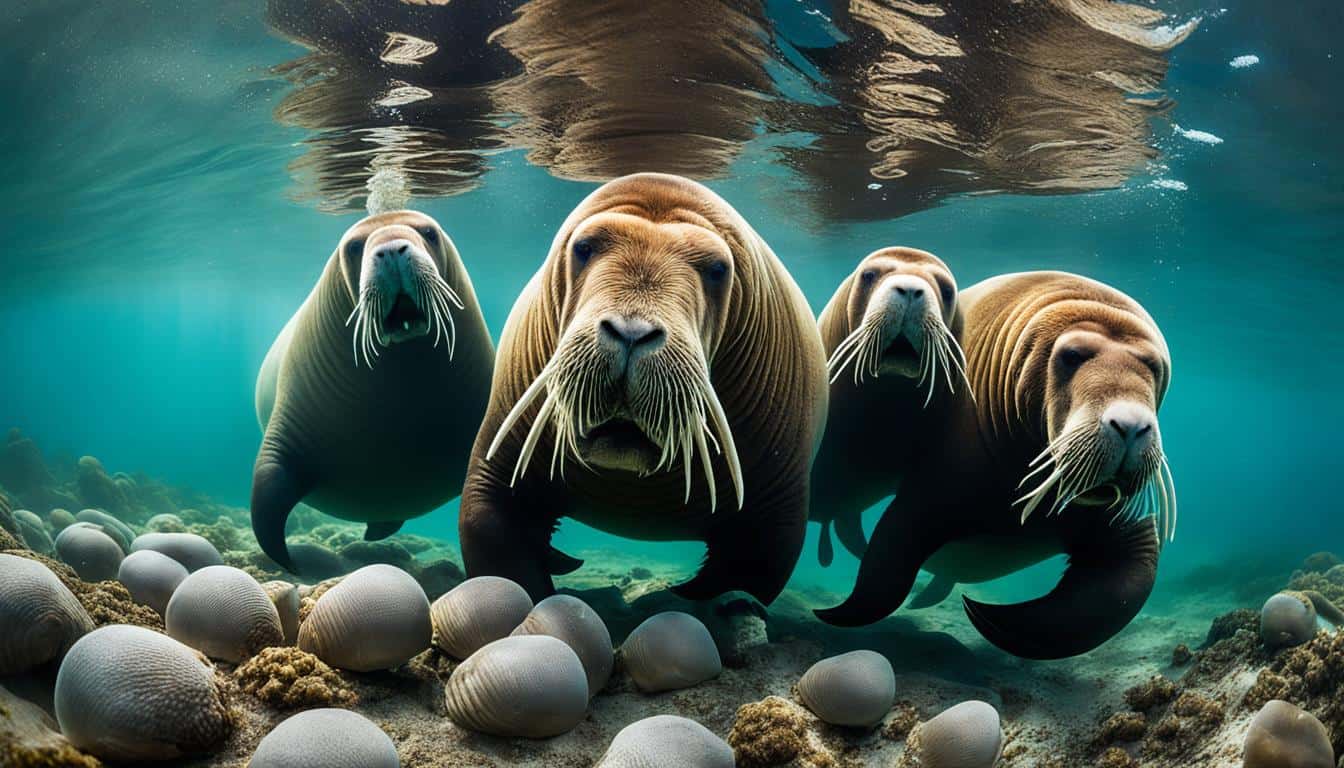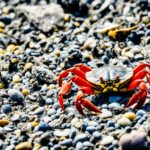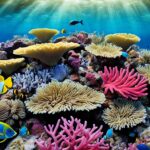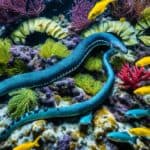Walruses are part of the pinniped family and live in the Arctic seas. You might ask, how do they find their food? They use special physical traits and social ways to hunt. This article will look into their eating habits and their important place in the ocean.
Walruses are very sensitive to their environment and eat a wide variety of foods. They show how well they can adapt and forage for food in tough places.
Introduction to Walrus Feeding Habits
Learning about walrus feeding habits shows us their diet and their big role in the ocean. They are a great example of how animals interact with their world through what they eat and how they behave.
Overview of Walrus Diet
The main foods for walruses are many kinds of sea creatures. Their top foods are:
- Clams
- Snails
- Worms
- Sea cucumbers
- Occasional fish
In one feeding trip, a walrus can eat between 3,000 and 6,000 clams. This shows how well they can feed in their home.
Importance of Walrus in the Marine Ecosystem
The walrus is very important for the ocean’s balance. By eating certain sea creatures, they keep their home healthy. This helps control the numbers of other sea animals and makes the ocean better for all living things.
How do walruses hunt for food?
Walruses are amazing marine mammals with special ways to find food. They use unique hunting methods and behaviors to get food from the ocean.
Use of Sensitive Whiskers
Walruses have special whiskers called vibrissae that help them find food. These whiskers let them feel for prey under the water. When they search for food, they move their snouts over the ground, feeling for vibrations and movements of food.
Methods of Locating Prey
Walruses also have other ways to find their food. They blow water out of their mouths to show where food is hidden. This is great for finding clams and other soft creatures under the sand. These hunting methods help them find food even in unclear water.
Walrus Feeding Strategies and Behavior
Walruses have interesting social behaviors that affect how they find and eat food. They often hang out in big groups, known as haulouts. These groups help them stay safe and connect with each other.
Gathering in Large Groups
At haulouts, walruses rest and eat together, using their group size to their advantage. Sharing food tips makes hunting more effective. This way, they can protect themselves from predators better.
Seasonal Changes in Feeding Patterns
Seasons change how walruses hunt for food. In summer, they’re busy finding and eating a lot because there’s plenty of food. They move to places with lots of nutrients to hunt.
As breeding time comes, males eat less because they’re fighting for mates. But pregnant females eat more to keep their babies healthy. This shows how walruses change their eating habits based on the season and their social life.
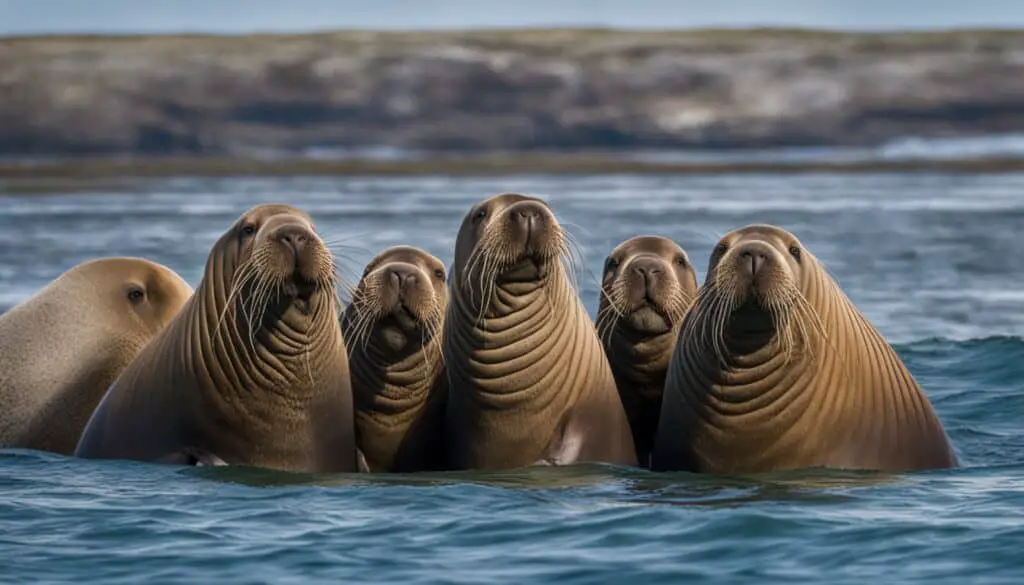
Walrus Prey Selection
Learning about walrus prey selection helps us understand their unique eating habits and their role in the Arctic. They mainly eat mollusks and soft invertebrates from the ocean floor. This shows how well they’ve adapted to their environment and how crucial these organisms are for their survival.
Focus on Molluscs and Invertebrates
Clams are a big part of the walrus’s diet. They use their sensitive whiskers to find clams buried in the sediment. This shows how well they’ve adapted to get to their food in their home.
Occasional Predation on Seals
While clams are their main food, walruses sometimes eat seals, especially big males. This shows they can change their diet when needed. Eating seals is not common but it helps them survive in tough times.
FAQ
How do walruses hunt for food?
Walruses hunt by using their sensitive whiskers to find prey under the ocean floor. They move their snouts along the bottom and use water jets to uncover clams and other buried creatures.
What do walruses eat?
Walruses eat mainly marine invertebrates like clams. They also eat snails, worms, sea cucumbers, and sometimes fish.
How important are walruses to marine ecosystems?
Walruses are key to keeping marine ecosystems balanced. They eat benthic organisms, which helps control their populations. This affects the health of the ocean.
What are walrus feeding strategies?
Walruses forage in large groups, called haulouts, for safety and to share food. They change how they hunt based on the season, hunting more in summer and during migrations.
Do walruses hunt seals?
Some walruses, especially big males, hunt seals when they can’t find enough mollusks. This helps them survive in changing environments.
How does social behavior influence walrus feeding habits?
Social behavior affects walrus eating habits a lot. Adult males eat less during breeding season because they compete for mates. Pregnant females eat more to feed their babies.
What techniques do walruses use while hunting?
Walruses hunt using their whiskers to feel for prey, water jets to dig up food, and their big bodies to stir up the ocean floor for buried invertebrates.

